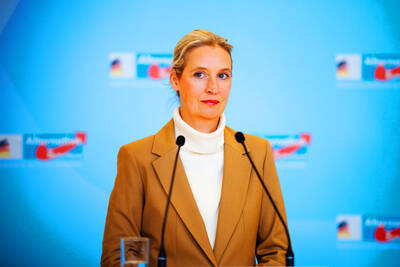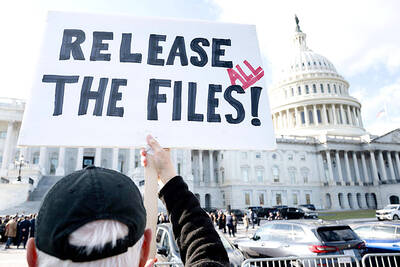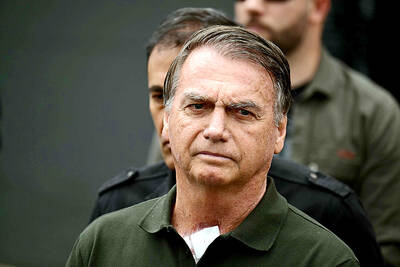In a major policy reversal, Wash-ington's special envoy for Sudan has confirmed the US is backing away from demands for deployment of a UN peacekeeping force to halt what it has called genocide in the the war-torn region of Darfur.
Andrew Natsios, US President George W. Bush's personal envoy to Sudan, said Washington and other Western governments were looking for an "alternate way" to deal with the violence in Darfur which has left at least 200,000 people dead and 2.5 million homeless in the past three-and-a-half years.
It was the first public admission that the US was reconsidering its backing for an Aug. 31 UN Security Council resolution, which Washington sponsored, demanding the immediate deployment of some 20,000 UN troops to replace an ineffective African Union peacekeeping force in Darfur.
Sudanese President Omar al-Beshir rejected the UN demand and refused to meet with Natsios during a visit to Khartoum last week, the US envoy said in an interview with the US National Holocaust Memorial Museum which was posted on the memorial's Web site on Friday.
Natsios said Beshir was furious over Bush's renewal last week of US financial sanctions imposed on Sudan for its handling of regional conflicts, including Darfur, and alleged support for international terrorists.
"They were quite upset about [it], so much so that they canceled my meeting with President Beshir," he said.
At a White House meeting with Natsios on Wednesday, Bush said he was reviewing the US approach to the Darfur crisis, described as the first genocide of the 21st century, but he refused to provide details.
A UN-brokered peace agreement signed in May with one of the rebel groups brought hope for an end to the carnage, but ultimately failed when other groups refused to sign.
Since then government-allied forces have renewed offensives in the region, with the UN reporting on Friday that scores of civilians had been massacred in refugee camps in the region over the past few days.
Under pressure from European allies and human rights groups, Secretary of State Condoleezza Rice made Darfur a major US foreign policy priority in the middle of this year, insisting that only a UN "blue-helmeted" force would have the financial and political clout to stop the killing.
But Besher has refused to budge.
At a summit of African leaders in Beijing on Friday, the Sudanese leader said accepting UN troops in Darfur would lead to a debacle similar to Iraq.
Natsios now says the UN role is no longer essential.
"Our real interest here is not what it is called or what it looks like in terms of its helmet, but how robust and how efficient it is," he said.
Washington could accept either a strengthened African Union force or one led by Arab or Muslim nations, possibly backed by UN financial or logistical support, he said.
Another element of the new US approach is to use African mediation -- Natsios mentioned Eritrea as a potential go between -- to renegotiate the May peace agreement in a bid to draw in other rebel groups.
The prospect of a policy turnaround was assailed as "shameful" by one former US official involved in the issue.
"If where we're headed now is some sort of appeasement or accommodation with the government of Sudan so they can yet again cherry pick and constrain a new peacekeeping force, we really are complicit in failing to stop this second wave of genocide," said Susan Rice, the State Department's top Africa official under the Clinton administration.

A feud has broken out between the top leaders of the far-right Alternative for Germany (AfD) party on whether to maintain close ties with Russia. The AfD leader Alice Weidel this week slammed planned visits to Russia by some party lawmakers, while coleader Tino Chrupalla voiced a defense of Russian President Vladimir Putin. The unusual split comes at a time when mainstream politicians have accused the anti-immigration AfD of acting as stooges for the Kremlin and even spying for Russia. The row has also erupted in a year in which the AfD is flying high, often polling above the record 20 percent it

Ecuadorans are today to vote on whether to allow the return of foreign military bases and the drafting of a new constitution that could give the country’s president more power. Voters are to decide on the presence of foreign military bases, which have been banned on Ecuadoran soil since 2008. A “yes” vote would likely bring the return of the US military to the Manta air base on the Pacific coast — once a hub for US anti-drug operations. Other questions concern ending public funding for political parties, reducing the number of lawmakers and creating an elected body that would

The latest batch from convicted sex offender Jeffrey Epstein’s e-mails illustrates the extraordinary scope of his contacts with powerful people, ranging from a top Trump adviser to Britain’s ex-prince Andrew. The US House of Representatives is expected to vote this week on trying to force release of evidence gathered on Epstein by law enforcement over the years — including the identities of the men suspected of participating in his alleged sex trafficking ring. However, a slew of e-mails released this week have already opened new windows to the extent of Epstein’s network. These include multiple references to US President Donald

CHARGES: The former president, who maintains his innocence, was sentenced to 27 years and three months in prison for a failed coup bid, as well as an assassination plot Far-right former Brazilian president Jair Bolsonaro is running out of options to avoid prison, after judges on Friday rejected his appeal against a 27-year sentence for a botched coup bid. Bolsonaro lost the 2022 elections and was convicted in September for his efforts to prevent Brazlian President Luiz Inacio Lula da Silva from taking power after the polls. Prosecutors said the scheme — which included plans to assassinate Lula and a top Brazilian Supreme Court judge — failed only due to a lack of support from military top brass. A panel of Supreme Court judges weighing Bolsonaro’s appeal all voted to uphold